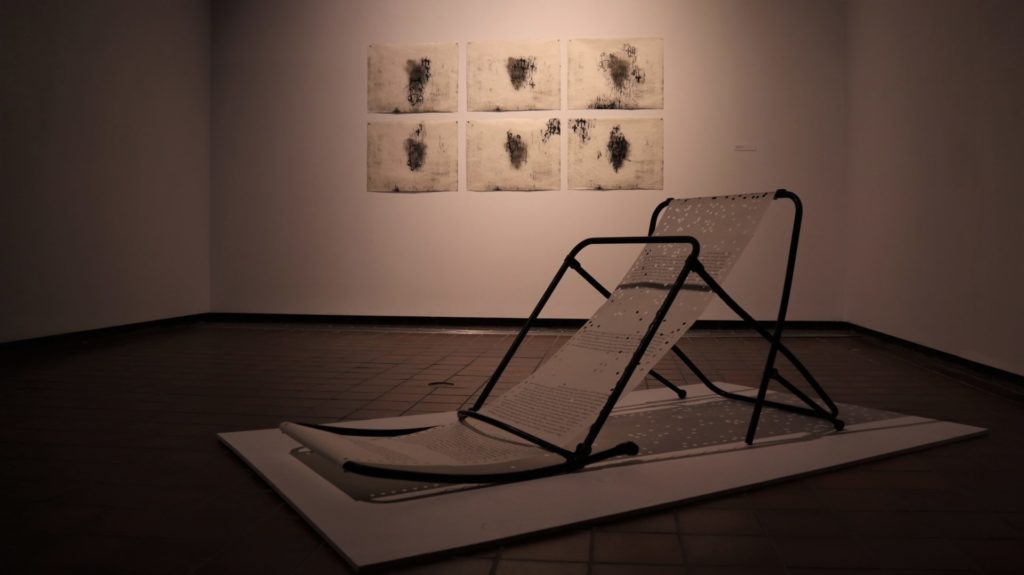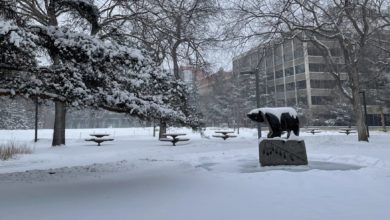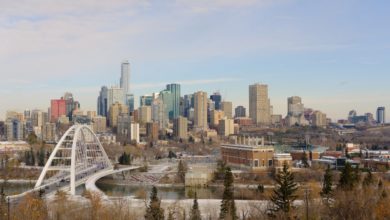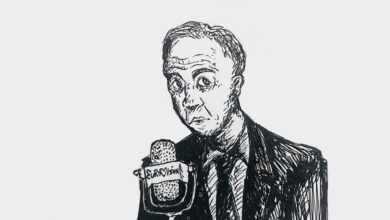The place art holds in climate change conversations: A review of FAB Gallery’s ‘Transitional Impressions’
Seven artists portray their own experiences with environmental degradation through print-making and artistic expression.
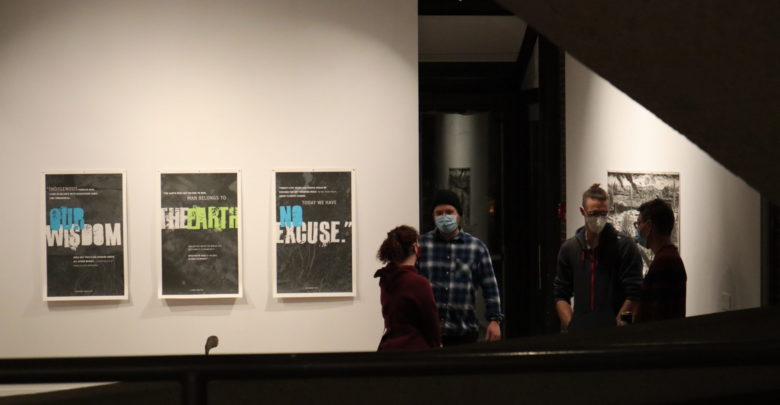 Sabrina Strelkov
Sabrina StrelkovArt has the potential to demonstrate climate change in an entirely new light. This is beautifully demonstrated by the University of Alberta FAB Gallery’s exhibit Transitional Impressions.
On November 3, I attended the opening reception for this exhibition and spoke to five of the seven featured artists.
Transitional Impressions was organized by University of Calgary Assistant Professor Heather Leier and U of A Professor Sean Caulfield, both of whom were artists featured in the exhibit. The exhibition also includes the work of Sue Colberg, Jill Ho-You, Kiona Callihoo Ligtvoet, Tara Manyfingers and Jewel Shaw.
Each piece of art displays a representation of environmental change, but beyond this unifying theme, the exhibit is deeply rooted in personal histories. The artists created pieces that were both an individual interpretation of environmental degradation, and a personal expression of their emotional responses to this crisis.
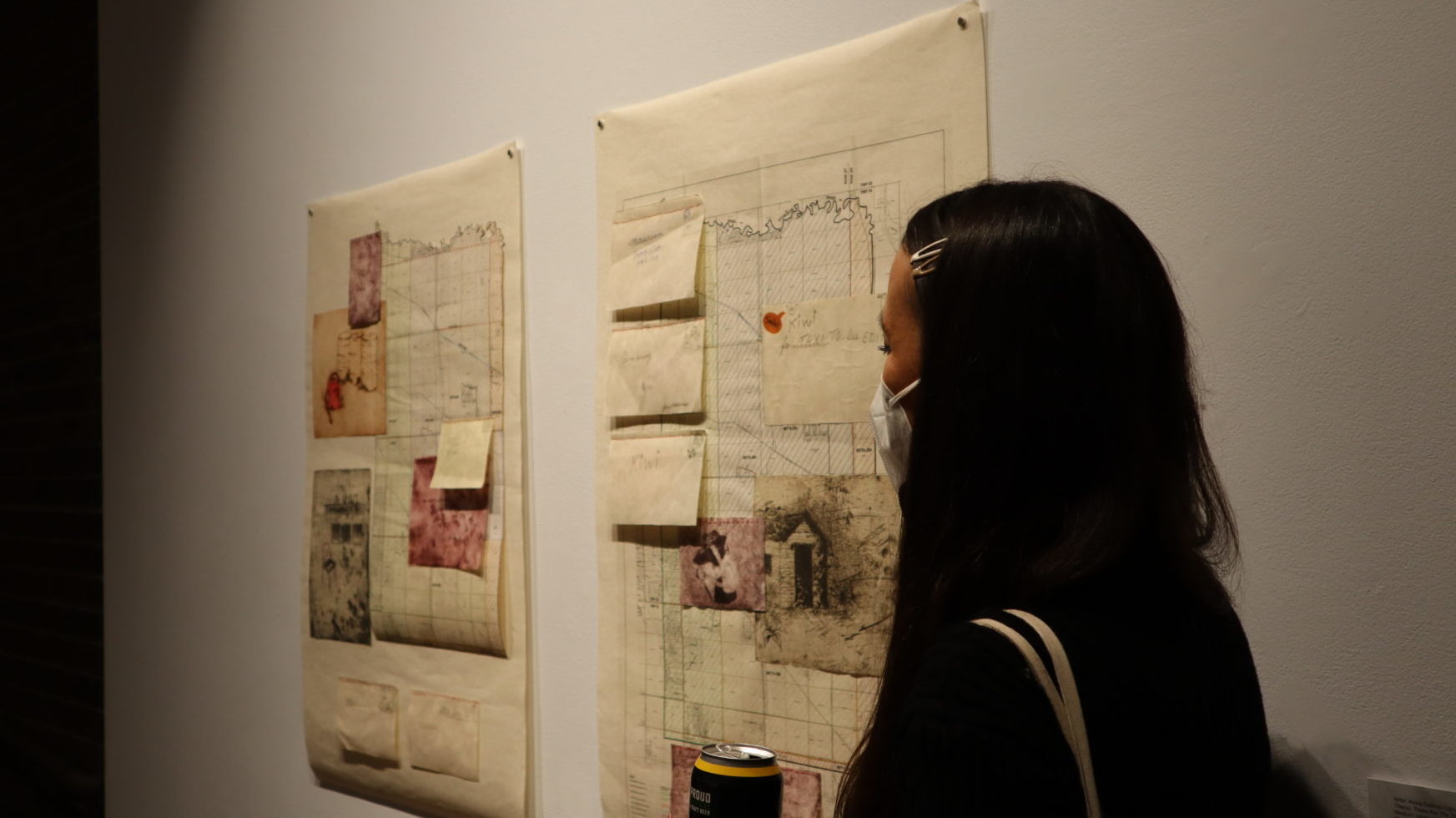
Callihoo Ligtvoet spoke about her piece, These Are the Things. She explained that the background consists of two colonial maps of the scrip land she grew up on with her moshom. Superimposed over these colonial maps are smaller prints that reflect how she sees the land and capture memories from her youth.
Callihoo Ligtvoet captured the haze of nostalgia, memory, and the value of family and ancestral heritage. These Are the Things is a beautiful demonstration of the intrinsic value of the land and the environments we grow up in, indicating the extent of loss associated with environmental degradation. The contrast between the colonial maps and her prints is haunting, as if you’re glimpsing at childhood memories that are tangled in present knowledge and perspective.
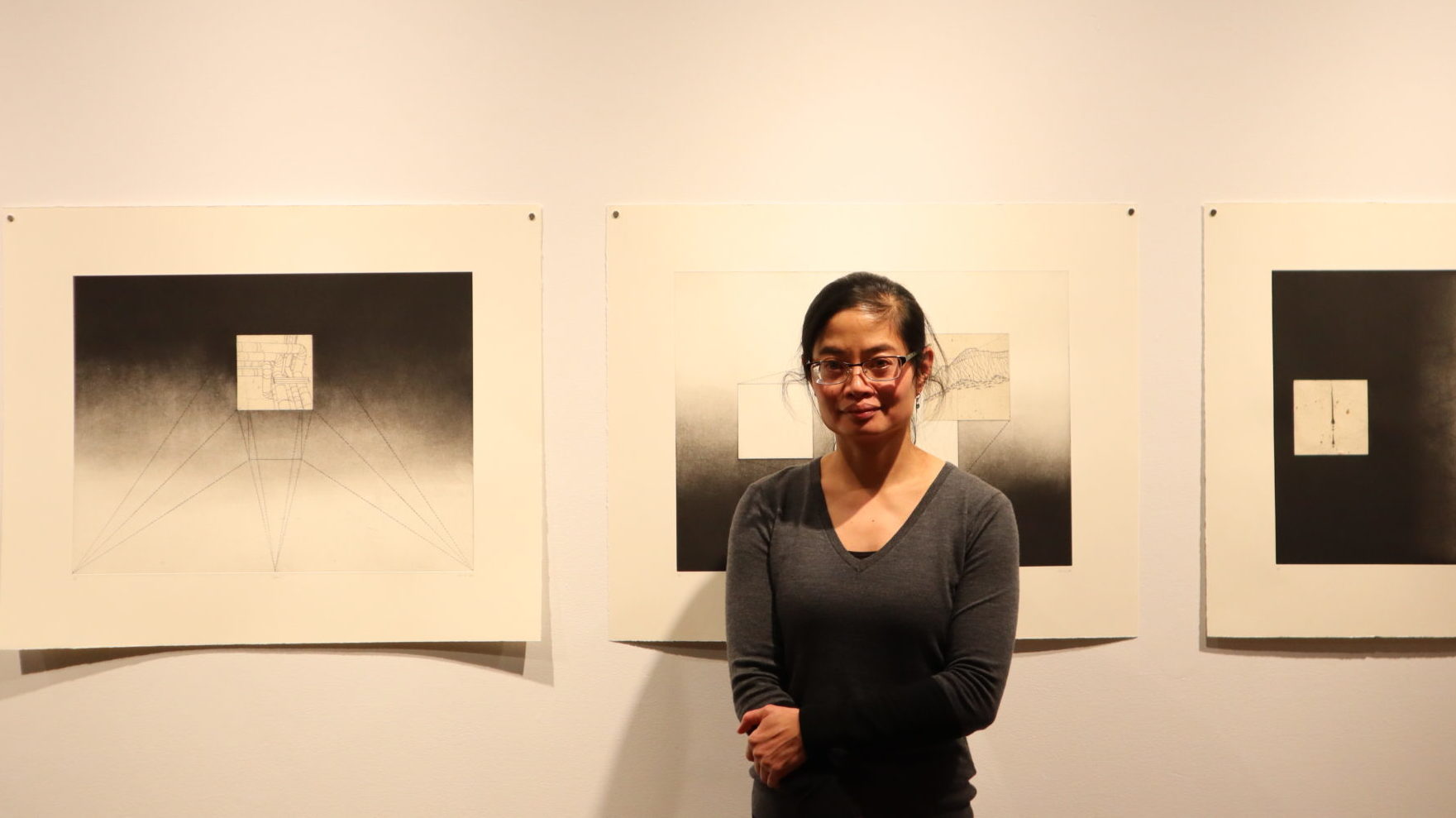
Ho-You created five prints to engage the question; how will Alberta embrace new forms of energy and address climate change? She explained that each print contains mathematical and geometrical perspective-based lines with an image related to the oil sands at the focal point. Ho-You expressed the symbolism of oil as it has been the focal point of Alberta’s energy industries for so long.
Ho-You hopes that viewers will be prompted by her artwork “to think about this kind of industrial imagery that [people] are so used to seeing, but think about it in a way that’s more reflective of … the situation we’re in environmentally.”
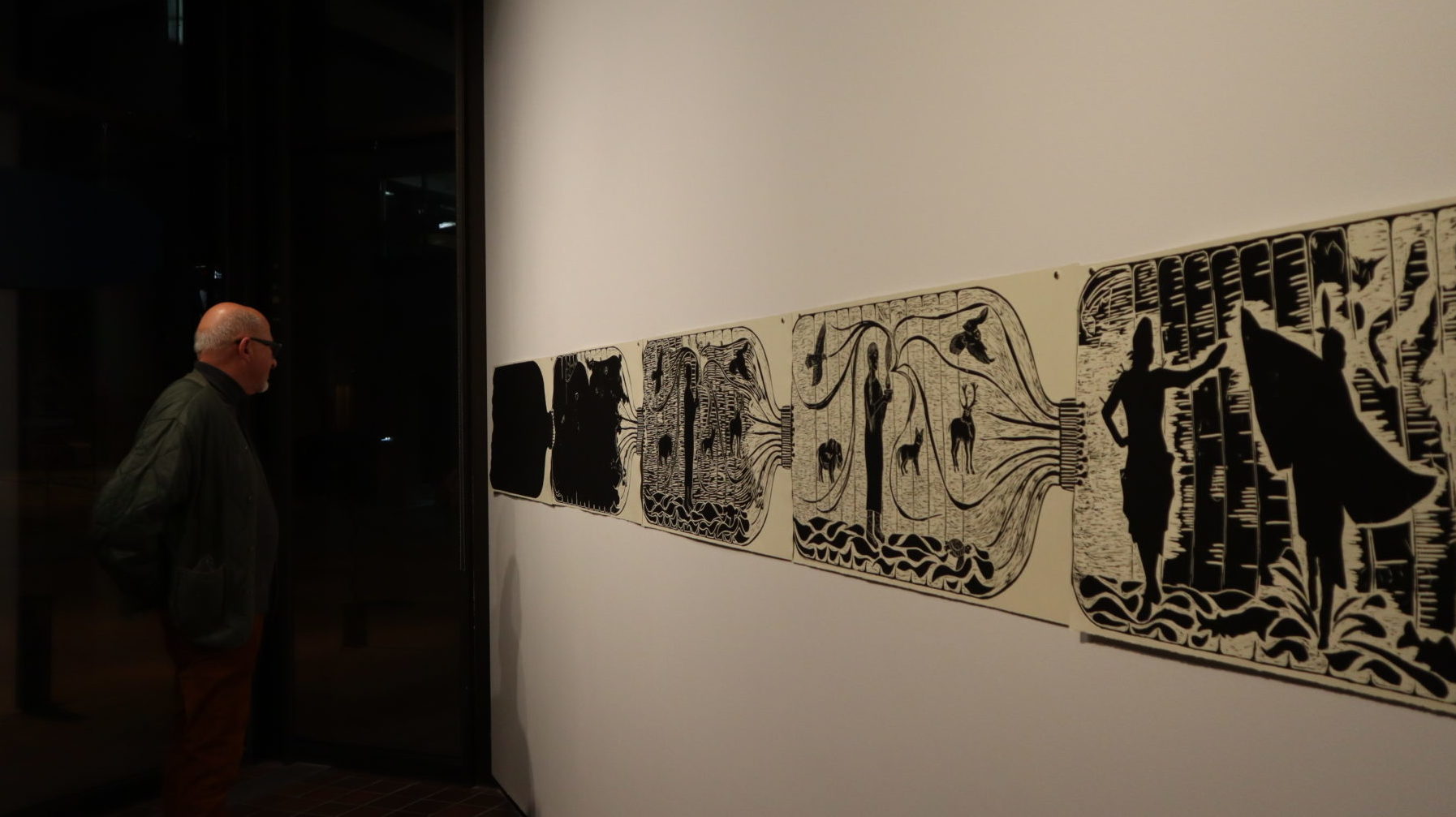
Manyfingers, who created multiple prints, titled her piece Three Sisters / Marilyn’s Prayer. The series of prints were intentionally placed in a row along the wall to create the shape of a pipeline. In the centre print, there are images of endangered animals of Western Canada, with a woman in the middle, which Manyfingers referred to as Marilyn’s Prayer.
The print to the right of it has three dancers, which are the Three Sisters. Each print farther away from the two centre prints has the same image, but each one gets darker until the woman and the dancers are no longer visible.
“It’s about conservation … keeping with the balance,” Manyfingers explained. ”That’s all in my culture, we don’t take from the Earth without giving back.”
This message is incredibly powerful, demonstrating a loss of respect for the environment from colonial and industrial influences.
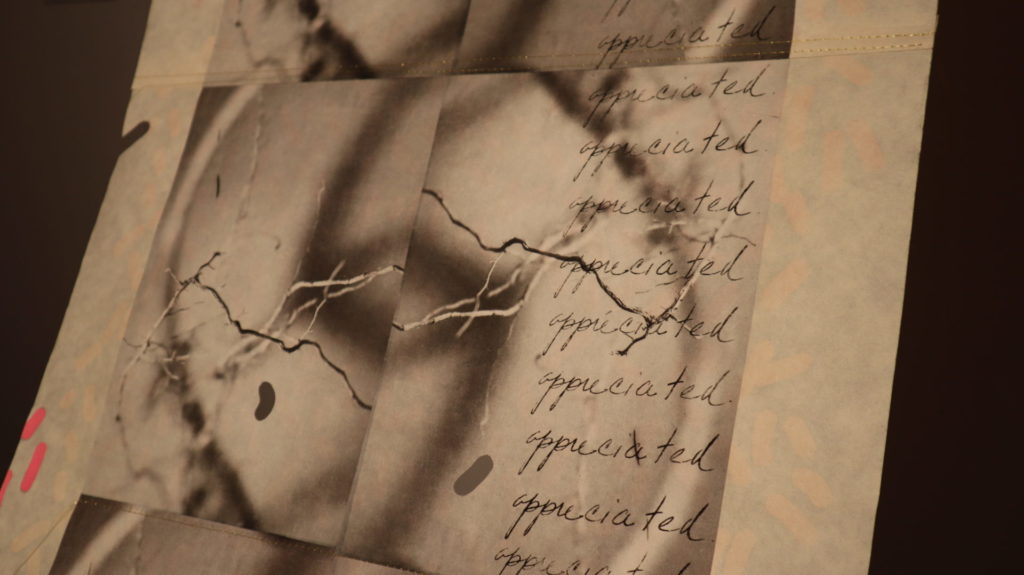
The message of respecting the Earth was consistent throughout the exhibit. Colberg’s prints contain environmental activism quotes. Leier’s displays capture the power of nature in contrast to human development, illustrating how the elements reclaim the land once humans have discarded it. Shaw’s prints use etching and woodcut techniques to demonstrate the abuse of nature.
Caulfield created surreal prints that told their own story. The imagery of over-exploitation on a desolate and dark Earth is achieved through an old style of printmaking, known as relief prints, that were historically used for activism. Caulfield’s artwork presents a multifaceted representation of environmental degradation.
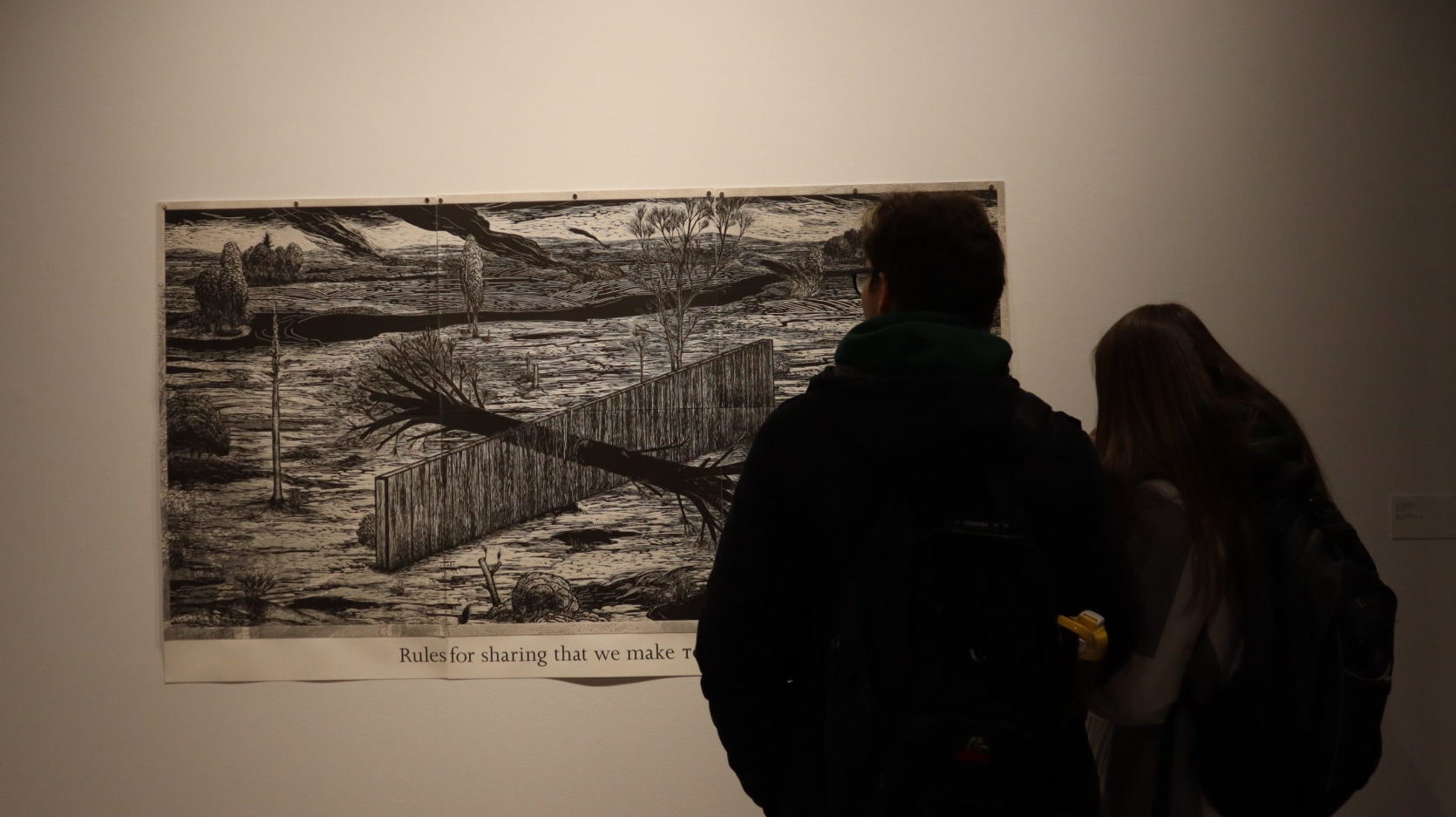
The Transitional Impressions exhibit was captivating and complex, encouraging viewers to reflect on the current status of the environment and representing a variety of voices. This reflection is accompanied by individual experiences, emotional responses, and nostalgic tones. Caulfield expressed how important art is for discovering new ways of confronting such issues.
As Caulfield put it, “art can be a tool to foster dialogue in ways other modes of communication can’t.”
“Art has the capacity to foster nuanced and complex thinking. [Environmental issues] are not simple, you don’t want to polarize our society, you want to foster society to think deeply and complexly about these things.”
This exhibition demonstrates the capacity of art to address environmental issues in new ways and allow for deeper investigation and expression. There is an exciting potential in this regard, as Transitional Impressions presents viewers with the opportunity to enjoy thoughtful, environmentally-focused artwork.
